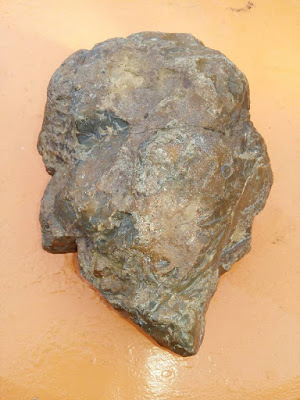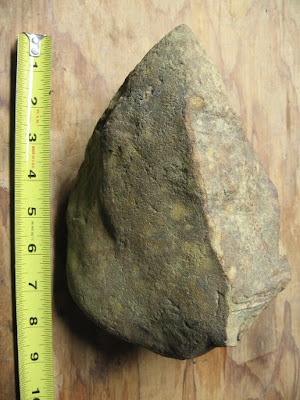Laura Ionescu find, mountains of Transylvania, Romania
Laura's find presented here is a single find outside of any known archaeological context. A stone like this is often very difficult to assess as a potential human artifact.
In this case, we are presented with an important clue which makes this isolated find a likely object of human attention in the Stone Age. There are two equal length incised lines which terminate at a point to create an upside-down "V" shape and it is placed in an anatomically correct position for a nose on the human face likeness on the stone. There also appears to be another incised line serving as a 'dimple' on the person's chin.
Hello Mr Ken Johnston. I am glad that stone that I have sent is of interest to you.This is the place where I found the stone: Turda Gorge (Cheile Turzii in Romanian) is a natural reserve (on Hășdate River) situated 6 km west of Turda and about 15 km south-east of Cluj-Napoca, in Transylvania, Romania.The Turda Gorges represent a complex geological, flora, fauna, archaeological area. Traces of human presence indicates Turzii in these caves since the Middle Paleolithic, Neolithic and culture belonging Cotofeni.Thanks. -Laura Ionescu
Illustration of the 'nose' on the Transylvania human head figure stone
The find locations for the Romanian and Sri Lankan figure stones are about 4,200 miles apart. This may indicate a broad area of cultural influence which played a role in how humans marked stones to recognize or complete their human head likeness.
I have suspected the common artificial application of nose and nostril details on many figure stones seen on this blog may have been a way for Stone Age peoples to add a symbolic 'breath of life' to the rocks.


Romania and Sri Lanka figure stones with similar expression of human noses













































